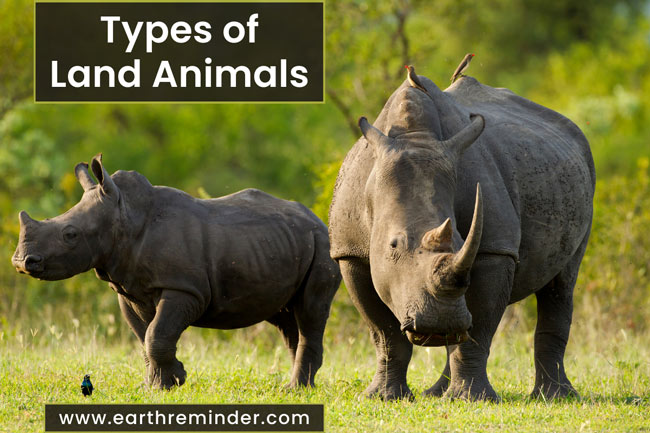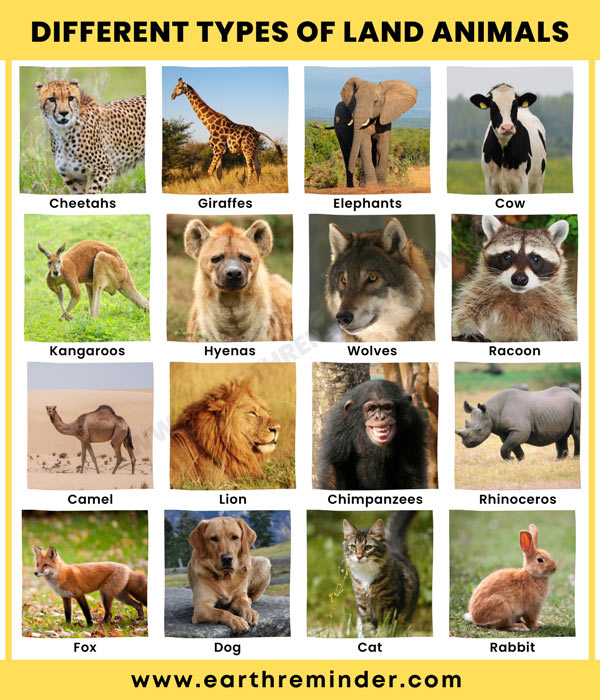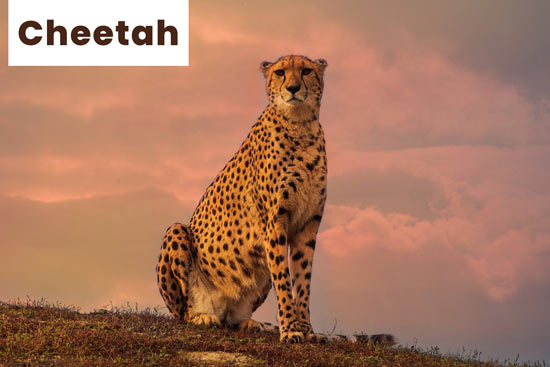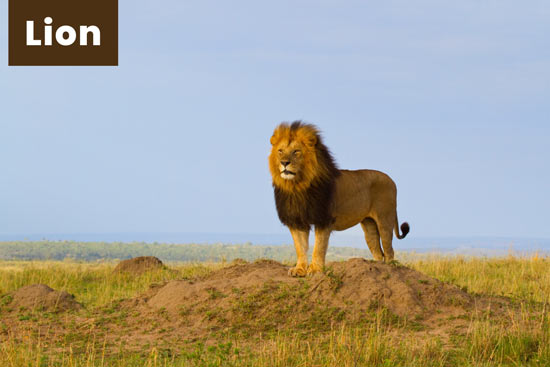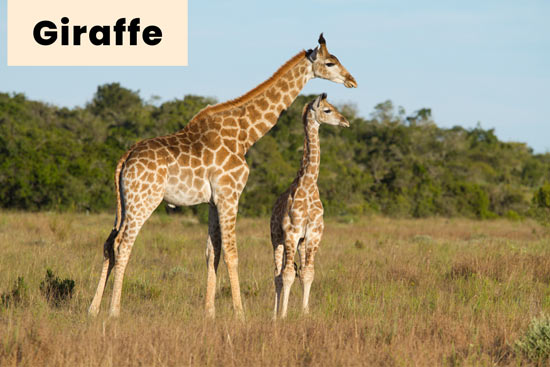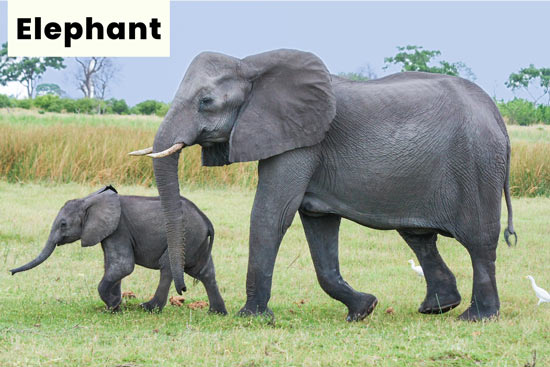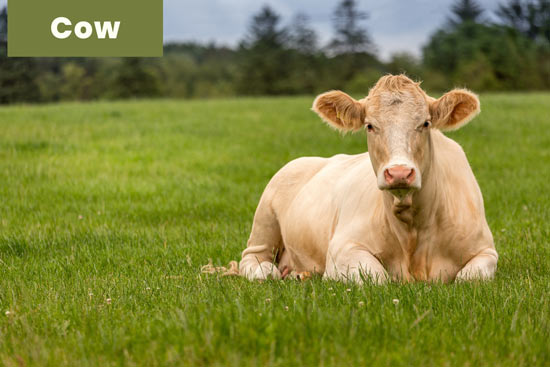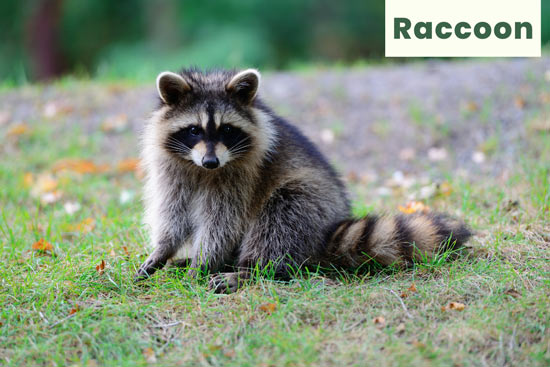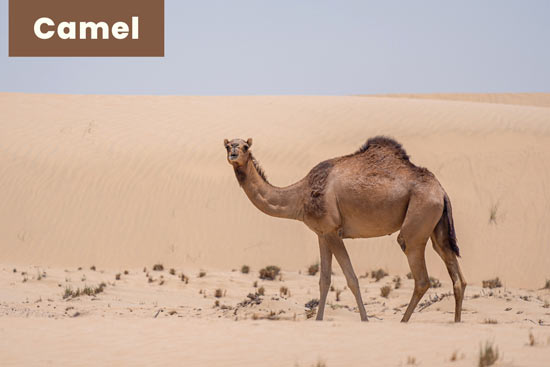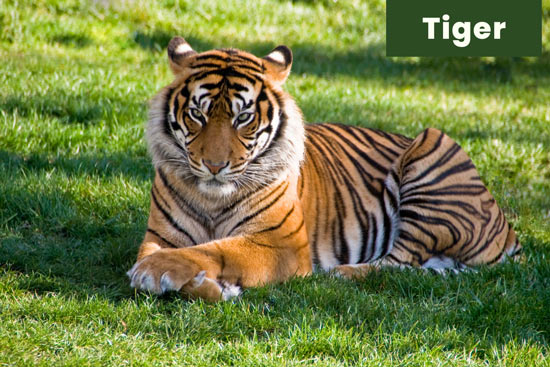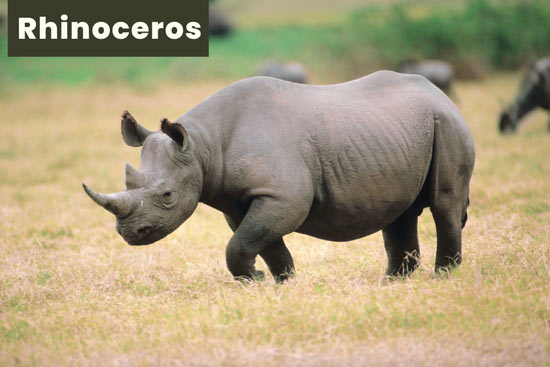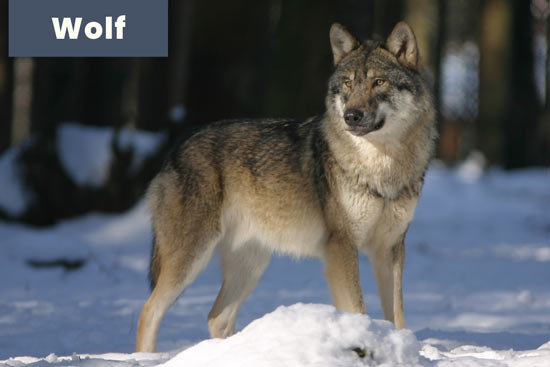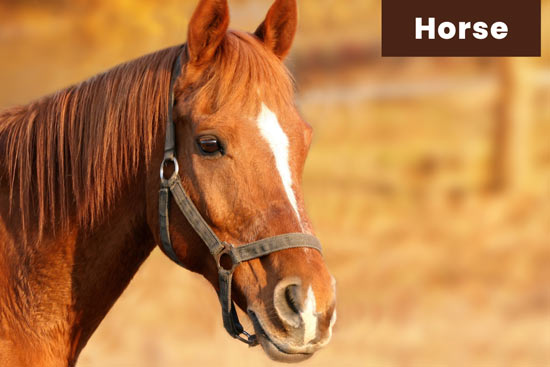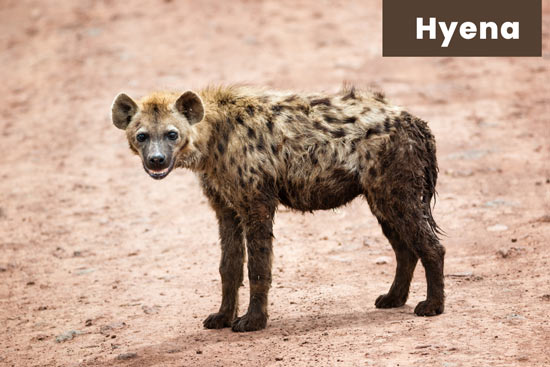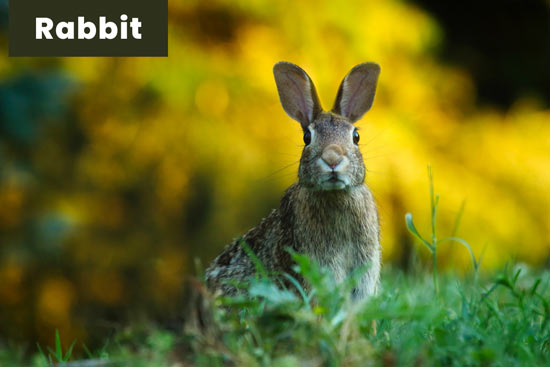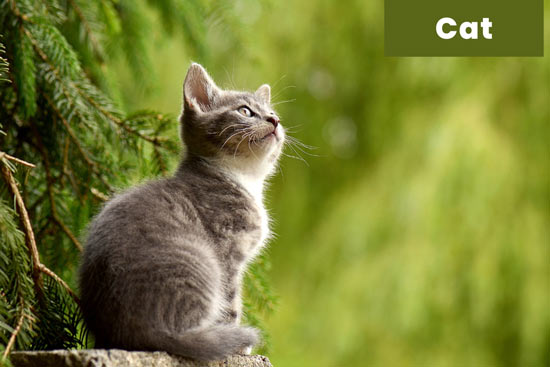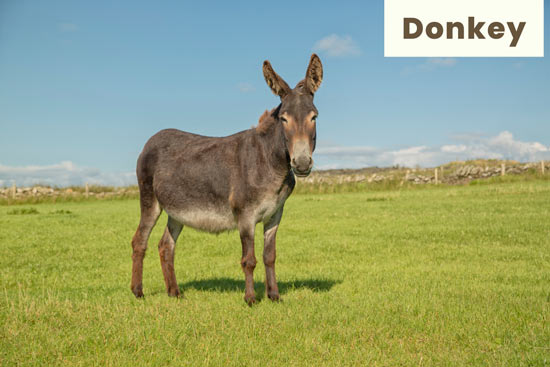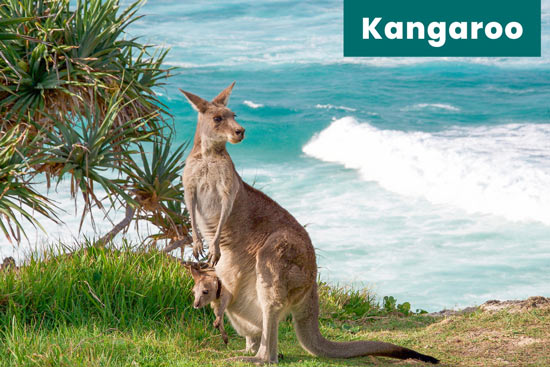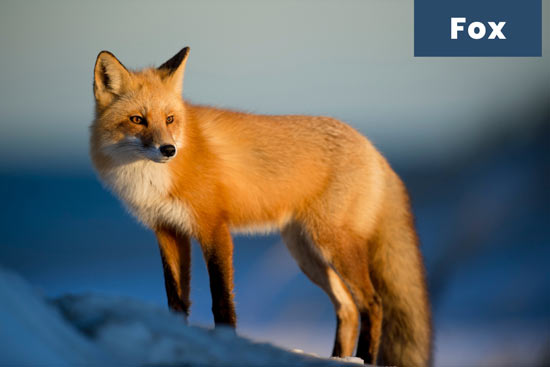18 Different Types of Land Animals
Any animal that lives thrives, and reproduces on land is called a terrestrial animal. Animal life on land has evolved and diversified for millions of years. From giraffes to shrews, there are now thousands of species that live exclusively on land. Here, we’ll take a look at some of the different types of land or terrestrial animals and how they interact with their environments. You’ll learn about their behaviors, diets, and amazing adaptations they have in order to survive.
“Terra” in Latin means “land” or “earth”, and that’s how the name terrestrial came about. Unlike amphibians, who can survive both on land and in water, terrestrial animals have fully adapted to land by developing better sense organs. The lifespan of terrestrial animals varies from species to species. Some land animals live only a few years, while others like a hippopotamus or Asian elephant, can live up to 70 years.
Table of Contents
Types of Land Animals
Many different types of animals live on land. The list of animals on land includes cheetah, lion, giraffe, elephant, cow, raccoon, camel, tiger, rhinoceros, wolf, horse, hyena, rabbit, dog, cat, donkey, etc. Let’s take a look at them in detail.
Cheetah
Scientific Name: Acinonyx jubatus
The cheetah is the fastest land animal on the planet, accelerating up to 120 km per hour. This short burst of speed lasts closes to 60 seconds, enough for this wild animal to catch its favorite prey, including rabbits, young warthogs, and antelopes. Cheetahs have keen eyesight. Their coat helps them blend well with the dry, tall grass of the jungle.
Lion
Scientific Name: Panthera Leo
The lion is the second-largest cat in the world. Also known for being the laziest among the big cats, they spend about 16-21 hours of the day sleeping or resting. A lion’s roar can be heard up to 8 kilometers away, which effectively makes all the small and large animals in the area move to safer grounds. They live in a group of 2-40 lions called a pride, where female lions are the primary hunters. These night hunters prey on many animals, including zebras, buffaloes, giraffes, and even crocodiles.
Also Read: How Do Lions Adapt to Their Environment?
Giraffe
Scientific Name: Giraffa
The giraffe is the tallest living terrestrial animal. It is known for its slender long neck and lives in a non-territorial group of 20. This animal is very social, has spectacular eyesight, and can survive up to 26 years in the wild. Giraffes love to eat new leaves and shoots and can browse foliage almost six meters from the ground.
Also Read: World Giraffe Day: History and Celebrations.
Elephant
Scientific Name: Elephantidae
The elephant is the largest living land animal, well known for its long trunk and tusks. They use their multipurpose grey trunks to pick up objects, greet other elephants for trumpet warnings, or suck water for drinking or bathing. They can growl, roar, snort, and cry. An elephant can feed itself for nearly 18 hours and can digest hundreds of pounds of plant matter in one day.
Also Read: World Elephant Day: History and Celebrations.
Cow
Scientific Name: Bos Taurus
A cow is a domestic land animal and is the most common farm animal around the world. Cows are raised for many purposes, including milk. They have horns and a hump on their back. Cows can easily adapt to any environment, be it the jungle, mountains, or open plains. Cows are well adapted to grazing and have a four-chambered stomach that acts as a fermentation vat.
Raccoon
Scientific Name: Procyon (genus)
The raccoon is a medium-sized mammal famous for its black mask across the eyes and ringed tail. Raccoons are curious and intelligent animals. They are omnivorous and feed on rodents, crayfish, frogs, fruits, and plant matter. Raccoons adapt well to human presence; they den in buildings and overcome food shortages in winter by becoming dormant.
Camel
Scientific Name: Camelus
Camels are another example of land animals. They are herbivores, eating grass, wheat, grains, and oats. Camels are known to survive for long periods without food and water. Domesticated by humans for milk, textiles, and long travels across arid climates, camels are capable of carrying 200 pounds and walking 20 miles a day. A camel’s most notable physical feature is its hump. While the dromedary camel stores fat in one hump, the Bactrian camel stores fat in two humps.
Tiger
Scientific Name: Panthera Tigris
The tiger is the largest living member of the feline family. They have adapted greatly from the Siberian taiga (−40°C) to the mangrove swamps of the Sundarbans (40°C). Deer and wild pigs are generally the prey of this night hunter. Due to their solitary nature, tigers minimize territorial conflict. They successfully mark and maintain their territory through a variety of methods. These include scraping the ground, vocalizing, marking trees with claws, rubbing the glands on their faces, and spraying urine.
Also Read: World Tiger Day: History, Importance and Celebrations.
Rhinoceros
Scientific Name: Rhinocerotidae
Rhinoceros is one of the largest terrestrial animals. One or two horns characterize them. Most rhinoceros are solitary, but the white rhinoceros live in groups of up to 10 animals. Rhinos are also known for their remarkably thick skin, which has plate-like folds. This herbivore animal has poor eyesight but makes it up with its acute senses of hearing and smell.
Wolf
Scientific Name: Canis Lupus
The wolf is the largest non-domestic member of the dog family. The wolf is built for travel; its keen senses, powerful jaws, large canine teeth, and the ability to chase prey at 60-64 km per hour make it suitable for a predatory life. Wolves can live in packs of up to 30, but packs of 4 to 15 are most common. In comparison, the female takes up the role of care and defense of pups, and the male hunts, and travels for food. Wolves are known for howling which helps strengthen the pack.
Also Read: Animals That Protect Their Family and Young Ones.
Horse
Scientific Name: Equus ferus caballus
The horse is a hoofed, herbivorous land animal. Domesticated by humans, it is used as a draft animal. Male horses are called stallions, while a female horse is a mare. The horse, known for its speed and large eyes, is well adapted to eating plants. The lifespan of a horse is about 25 to 35 years at most.
Hyena
Scientific Name: Hyaenidae
The hyena, also known as a hyaena, is another type of terrestrial animal. Hyenas are carnivores found in Africa and Asia. They are tireless scavengers with excellent sight, smell, and hearing for locating carrion. Intelligence, curiosity, and opportunity matter when it comes to food, and hyenas have them all.
They steal livestock, burglarize food stores, and occasionally kill people. The spotted or laughing hyena is the largest species and is a proficient hunter. The spotted hyena feeds on nearly anything from young fish to hippos, although antelopes are the most common. They live in clans of 5 to 80 individuals.
Rabbit
Scientific Name: Leporidae
Rabbits are ground dwellers, most commonly known for their long ears that can measure up to 6 cm. These long ears are most probably an adaptation for detecting predators. When danger is recognized, rabbits tend to freeze and hide undercover. Scent plays a chief role in the communication hierarchy of most rabbits. Rabbits devour plant material in huge quantities and graze on grasses and forbs.
Dog
Scientific Name: Canis lupus familiaris
The dog is a domesticated animal and is related to the fox and jackal. They come in all forms, shapes, and sizes. Dogs are faster, stronger, and can see and hear better than humans; that is why they are interbred to enhance these attributes. Dogs seldom chew their food once it is inside their mouth; it is swallowed and passed. Generally, dogs shed their coats based on the weather or season.
Cat
Scientific Name: Felis catus
Humans domesticate cats or house cats. Like all felids, cats are exceptionally agile, carnivorous, powerful, and deftly coordinated in movement. The cat’s sense of smell is crucial to its evaluation of food. The sense of touch and hearing are acute in household cats. The eyebrows, cheek hairs, whiskers, and fine ear hairs are all immensely sensitive to vibrational stimulation. Cats are also known for being curious.
Also Read: Why Do Animals Like Being Pets?
Donkey
Scientific Name: Equus asinus
A donkey or burro is a domestic land animal related to the horse family. The donkey is the oldest pack animal used to carry goods, freight, or supplies. The average donkey weighs about 250 kg. Donkeys are sure-footed and are famous for carrying hefty loads over rough terrain. They are quite social and usually live in a herd. Female donkeys are called jennets, while males are called Jacks.
Also Read: Importance Of Domestic Animals in Our Lives.
Kangaroo
Scientific Name: Macropodidae
Kangaroos are known for their hopping and leaping. They rely on their long, powerful hind legs for that. Females have pouches in which their joeys or young reside until they are old enough to survive on their own. The largest kangaroo is the red kangaroo, while the smallest is the musky rat kangaroo. Kangaroos are pretty social and live in a herd or a mob. They are herbivores and feed on grass, leaves, flowers, ferns, moss, and even insects.
Also Read: How Do Animals Help Each Other?
Fox
Scientific Name: Canidae
The fox or red fox is another example of a terrestrial animal. It is smaller than other members of the Canidae family, such as wolves, jackals, and domestic dogs, and weighs about 5-7 kg. Foxes are solitary, opportunistic feeders. They are pouncers who kill their prey quickly; however, they also gather a wide range of foods, from grasshoppers to berries and fruits. Foxes do not come together in groups like wolves or coyotes. Red foxes are hunted for sport and for their pelt, which is a pillar of the fur trade.
Also Read: The Ethics of Animal Use and Guidelines.
Conclusion
Animals living on the land are called terrestrial animals. Earth is home to a wide variety of land animals. All creatures, whether wild or domestic, have their own unique characteristics and behaviors. No matter what type you choose to observe or interact with, the knowledge gained will be enlightening and educational. By learning more about each animal species, we will be in a better position to appreciate them as part of our natural environment.
